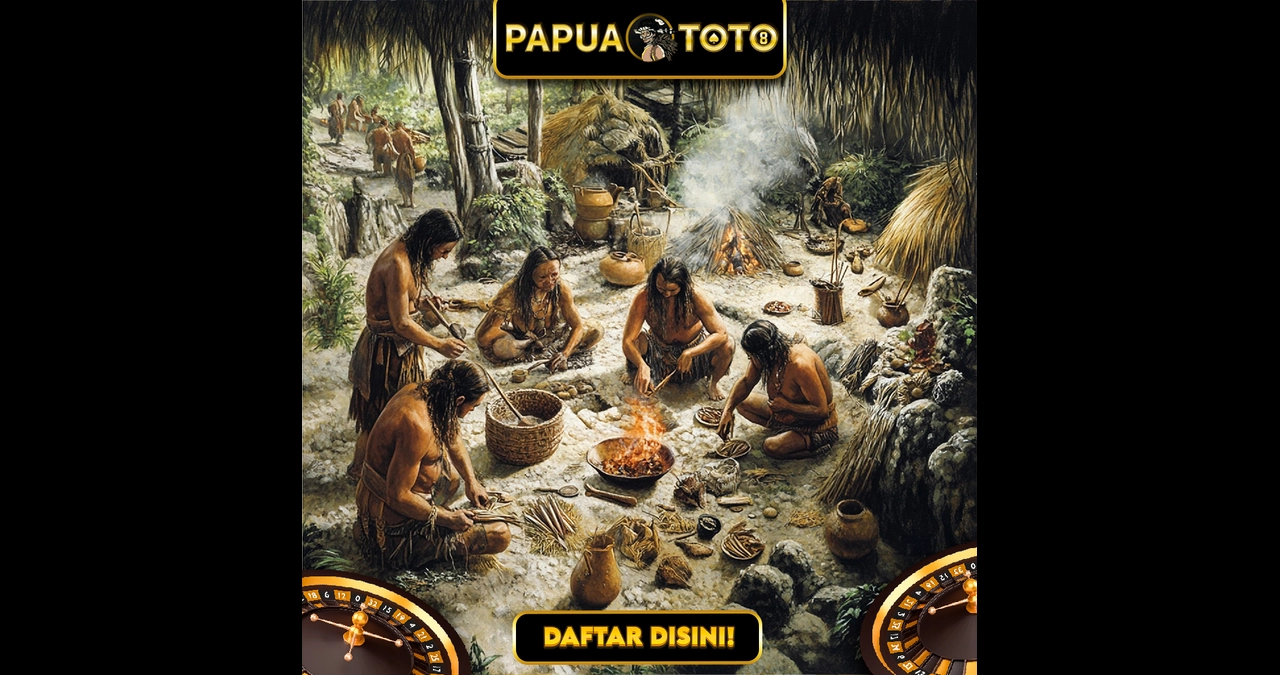Introduction
Papua Toto has sparked curiosity worldwide. Often shrouded in myth and mystery, it stands out as a captivating topic for explorers, historians, and cultural enthusiasts alike. In this article, we embark on an expert-level expedition to uncover the many facets of Papua Toto. From origins and cultural significance to the modern-day revival and controversies, we aim to bring clarity and depth — all while keeping things engaging and approachable. Think of this as an insider’s guide, written in a casual tone but backed with expertise.
Let’s journey together through the world of Papua Toto.
Origins and Early History of Papua Toto
The story of Papua Toto begins centuries ago. Long before modern documentation, indigenous communities passed down tales of an entity known as Toto—believed to be a force of nature, spirit, or place. Early anthropologists encountered references in oral traditions, linking Toto to ancestral lineage and environmental balance. Legends tell of Toto as a guardian of forests, rivers, and tribal harmony. These narratives were embedded in cultural ceremonies and deeply interwoven with daily life.
As trade and contact increased, the concept of Toto evolved. External merchants and explorers began documenting what they observed. They noted rituals invoking Toto during harvest seasons or river journeys. Although exact interpretations varied across regions, the reverence was universal. What’s clear is that Toto was much more than folklore—it was a living, breathing aspect of identity and survival. Over time, as communities grew and spread, Toto evolved in meaning, building a diverse mosaic of significance.
Cultural Significance and Symbolism
Papua Toto is rich in symbolic meanings. Traditionally, it was viewed as an emblem of protection. Families offered offerings—fruits, carved statues, songs—to respect and honor Toto. It was believed that Toto could influence weather patterns, ensure bountiful harvests, and maintain harmony among clans.
Beyond protection, it symbolized identity. Each village had unique interpretations—some considering Toto as a forest spirit, others as a river deity. Totem carvings, woven textiles, and even body art paid tribute to Toto, embedding spiritual communion in everyday expressions. Ceremonial dances dramatized stories of Toto’s interactions with humans, offering both moral guidance and communal bonding.
In modern times, Toto symbolism resurfaces in art and tourism. Contemporary artists reinterpret Toto in paintings, sculptures, and multimedia installations. This revival attracts global attention, blending ancestral symbolism with modern aesthetics. Yet scholars note the need to preserve authentic contexts, ensuring that commercialization doesn’t strip Toto of its deep-rooted meanings.
Geographic Spread and Local Variations
Papua Toto is not a monolith. Its expressions vary across regions, shaped by environment, tribe, and historical exchange. In highland territories, Toto is strongly connected to mountain spirits—mountains are considered ancestors. Rituals involve ascending peaks and offering gifts on mountaintops. Highlands communities often depict Toto in bright tapestries and feathered adornments.
In lowland areas—near rivers and forests—Toto is envisioned differently. Here, the focus is aquatic and terrestrial. Canoes are blessed, nets are dipped, and ceremonies ensure river stability. Guardian characters personify Toto, portrayed through elaborate wooden masks.
Each region also has unique stories. In one area, Toto helped defeat a great flood; elsewhere it healed a broken alliance. These local legends shape how communities honor Toto. Even shared ceremonies may look very different in form, costume, and song. This rich tapestry of variation highlights how adaptive and resilient the notion of Toto is, reflecting both diversity and shared spiritual roots.
Modern Revival and Cultural Preservation
With globalization and urban migration, traditional cultures face challenges. Papua Toto was no exception. Younger generations drifted towards urban hubs, and rituals faced decline. Yet in recent years, a revival is underway. Tribal councils, local governments, and cultural NGOs have initiated programs to teach youth traditional songs, dances, and crafts related to Toto.
Festivals celebrating Toto have gained traction. Annual events showcase traditional dance competitions, art markets, storytelling workshops, and spiritual performances. These festivals draw both domestic and international guest interest, fostering cultural pride and economic benefit.
Academics from national universities also contribute. They record oral histories, interpret ritual contexts, and publish multilingual research. Documentaries highlight Toto’s significance, educating audiences about ecological connections and tribal heritage. The modern revival of Toto is not static; it is creative and inclusive, welcoming reinterpretation while safeguarding authenticity.
Papuan Toto in Contemporary Media and Tourism
In film, music, and literature, Toto has found renewed life. Documentary filmmakers capture ceremonies, interviews with tribal elders, and the transformation of Toto in modern times. Fiction writers weave Toto-themed plots into novels, reflecting themes of heritage, conflict, and reconciliation.
Tourism agencies now offer cultural immersion packages. Travelers can visit villages to observe Tuptu performances, learn traditional weaving, or participate in harvest ceremonies under ceremonial guidance. Guidebooks emphasize responsible and respectful tourism—insisting on community authorization, shared revenue models, and minimal ecological impact.
Despite these opportunities, critics caution against superficial experiences. The industry risks turning Toto into a mere spectacle. Ethical frameworks are emerging to ensure correct representation, equitable benefit-sharing, and preservation of sacred Papua Toto. When done right, tourism can support cultural preservation and community welfare.
Controversies and Ethical Considerations
Inevitably, the resurgence of Toto encounters tensions. Some view the modern commercial use as exploitative. Who owns the right to perform traditional ceremonies? Can outsiders pay to watch spiritual rites? These questions generate heated debate.
Academic discourses highlight the risk of cultural dilution. When culture is packaged for tourists, depth can be lost. Scholars stress the importance of community-led narratives, not external curators. Without that, Toto representations risk becoming generic clichés—losing distinctive language, symbols, and beliefs.
Legal frameworks are evolving. Papua’s local governments are introducing cultural heritage protections. NGOs collaborate with tribal leaders to formalize permission processes. Some communities have begun trademarking traditional names, patterns, and dances. This protects against unauthorized use, though it raises more questions about commodification versus preservation.
Quick Bio Table
A handy reference to key elements of Papua Toto:
| Feature | Description |
| Cultural Origin | Indigenous traditions across Papuan highlands and lowlands |
| Key | Symbolism Protection, identity, ecological harmony |
| Primary | Rituals Mountain rituals, river blessings, dance performances |
| Local | Variations Highland peaks vs riverine masks, foliage |
| Modern | Revival Efforts Festivals, community education, academic documentation |
| Media | Representation Documentaries, novels, tourism experiences |
| Ethical Concerns | Cultural appropriation, intellectual property, revenue equity |
FAQs
Q: What is the true meaning of Papua Toto?
A: At its core, Toto embodies a spiritual guardian—protecting people, nature, and community harmony. Meanings vary regionally, but unity, protection, and identity are universal.
Q: Can visitors participate in Toto ceremonies?
A: Yes, under certain conditions. Many communities welcome respectful participation, but access is often regulated—seeking community permission and guided conduct.
Q: Is Papua Toto the same across all tribes?
A: No. While sharing foundational themes, each tribe interprets Toto through its environment, legend, and ritual form.
Q: Are there risks with cultural tourism and Toto?
A: Risks include cultural dilution, misrepresentation, and economic inequality. Ethical frameworks are essential to protect authenticity and community control.
Q: How can I support Papua Toto revival responsibly?
A: Respect local leadership, attend authorized events, buy crafts directly from makers, donate to community preservation funds, and share stories accurately.
Q: Are there published works on Toto?
A: Yes. Several anthropologists have documented these traditions. Many universities in Indonesia and Papua have published articles in indigenous languages and English.
Conclusion
Papua Toto is a profound cultural phenomenon—one rooted in spiritual reverence, ecological respect, and collective identity. Its journey from ancestral ceremonies to modern media highlights both the resilience and dynamism of cultural traditions. In an era of globalization, Toto reminds us of the importance of honoring indigenous voices, safeguarding heritage, and enabling creative reinvention.
As tourists, scholars, or simple admirers, we have a role: to learn deeply, engage ethically, and support community-led futures. By doing so, we ensure that Papua Toto remains vibrant—not as a static relic, but as a living, evolving tapestry of meaning.
May this exploration have offered clarity, inspiration, and respect for a tradition that transcends time and unites human connection with nature, spirit, and community.



